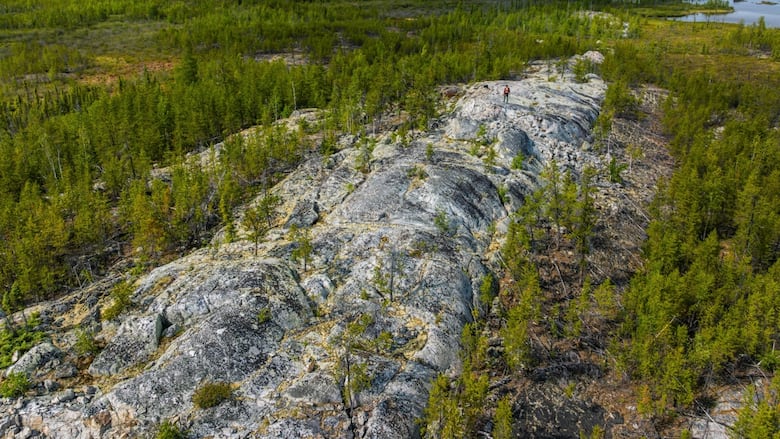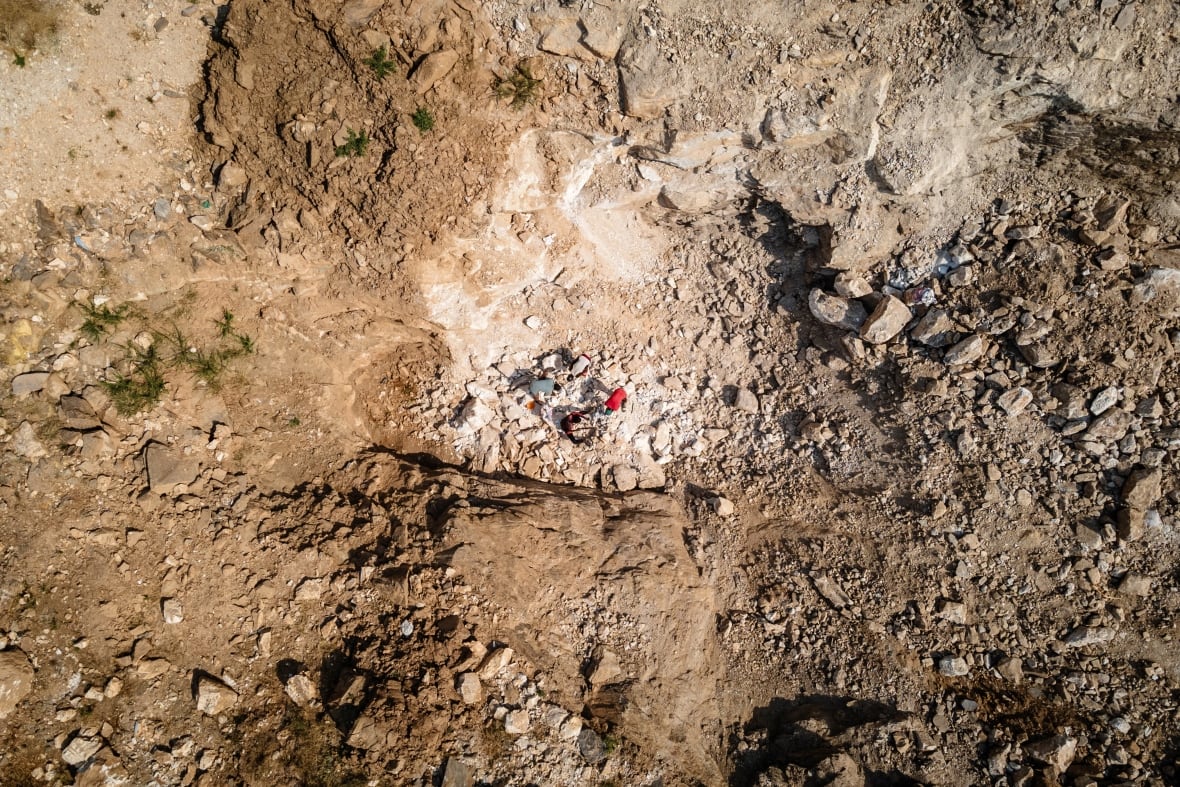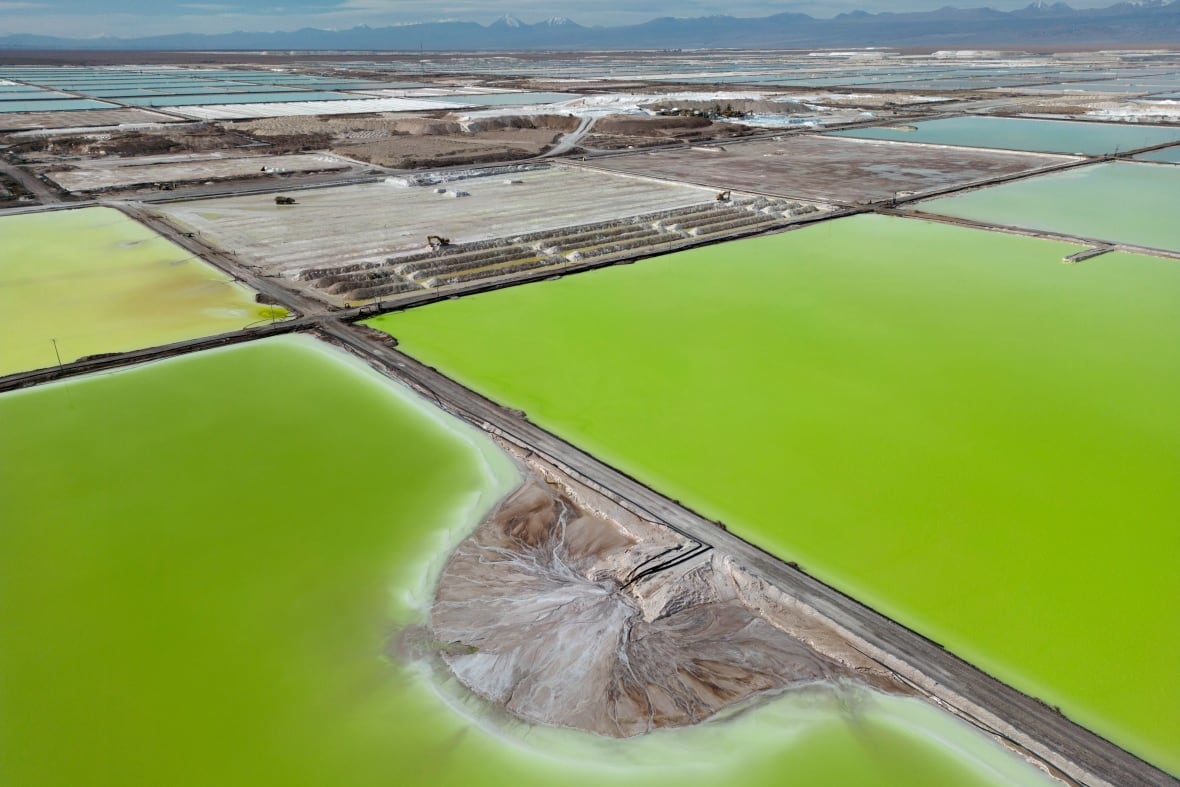Digging deeper: Saskatchewan producers look for greener way to mine lithium
Saskatchewan mining companies have turned to direct lithium extraction (DLE) technology, CEO says

Saskatchewan is home to large lithium deposits and a handful of the province's mining companies are betting on a green approach to take them global.
Lithium is the main element in batteries, powering everything from smartphones to electric vehicles (EVs), which made up 17 per cent of all new cars sold in Canada in 2024.
According to the United States Geological Survey, the global demand for lithium was up by nearly 18 per cent last year.
"Demand is expected to continue to grow and that's coming mainly in the form of EVs," said Paul Schubach, chief operating officer for EMP Metals Corporation.
He said there's a strong international interest in lithium, of which nearly 95 per cent of the metal comes from countries like Australia, Chile, China and Argentina.
The majority of the mineral is then processed in China, which dominates the manufacturing of electric vehicle batteries.
Schubach said Canada is far behind when it comes to producing lithium.
"There's a lot of attention right now on North America and the EV boom that was expected to be there just hasn't quite taken off yet," he said.
Environmental concerns around mining lithium
There are many ways that lithium can be mined, but not all of them are environmentally safe.
For instance, in South America, lithium is mined through expansive salt pools that hold salty water containing metals and minerals.
In places like Chile, Bolivia and Argentina, the salty water is pumped to the surface, where it sits in massive pools to naturally evaporate, separating lithium from the other minerals.

However, the extraction of brine has been found to reduce water levels in these areas, which can contaminate water sources with dangerous materials, becoming a danger to humans and animals who depend on it.
The other common way of getting lithium is strip mining, or open pit mining, where lithium is removed by digging into hard rock below the ground.
This can cause groundwater to dry up in nearby lakes, rivers and streams.
There's also toxic chemicals used that can leak into water sources if not properly managed.
With so many risks, some experts say that while extracting lithium is important, it shouldn't be thought of as a magic solution to climate change just because it powers the EV industry.
What does that mean for Saskatchewan?
It's no secret to Saskatchewan producers that lithium production can pose a harm to the environment.
That's why a handful of companies in the province are looking to change that by pioneering a new way of getting the mineral out of the ground.
Benjamin Sparrow, CEO of Saltworks Technologies, said instead of using traditional methods like hard rock mining or strip mining, more producers are now using direct lithium extraction (DLE), which takes it right out of the ground, separates out the lithium and recycles the groundwater.
"It's underway and specifically underway in Canada," Sparrow said.
He said DLE has the smallest environmental footprint and a "very small" land footprint for wells, electricity and water.
Evaporation ponds are often not using a freshwater resource. Instead, Sparrow said they use a brine that is not intended for farming, drinking or other means because it's low-quality water.

"The environmental footprint is largely associated with the ponds themselves, and as long as the ponds and the geotech is done right, there should not be any environmental concerns," he said.
Teresa Kramarz, a mining expert at the University of Toronto, cautions this type of technology is still being tested and has yet to be tried on a large commercial scale in Saskatchewan.
She said while in theory it uses less water and land, it needs to be studied further.
There's not a lot of research to demonstrate whether direct extraction uses less water than the salt ponds in South America, Kramarz said.
She said the potential for the technology is promising, but it remains to be seen if it will be cost effective and widely used.
What's stopping Saskatchewan's lithium industry from starting commercial production?
Sparrow said what stands out about Saskatchewan's resource is there's a high concentration of lithium and it's close to the surface, so it's very cost effective to extract.
Areas like Kindersley and Estevan, both have large reserves of an underground brine, or water, that contains lithium.
Additionally, Sparrow points to the province's infrastructure and labour available from the oil and gas industry, which isn't the case for other regions.
At the same time, the current cost for lithium is $8,000 to $10,000 a ton.
Sparrow said while the low cost makes DLE technology not the most economic, that hasn't put a damper on the Saskatchewan mining industry.

"Innovation can change the cost equation," Sparrow said. "And that's exactly the work that's underway in Saskatchewan to drive the cost down below today's market price."
Saskatchewan mining companies are betting the demand for lithium will quickly outpace supply.
Schubach said he is confident that will happen.
"I think once pricing in the market, you know, starts to see an uptick ... I think you'll see a lot of new interest sort of flooding into lithium in general, but also into direct lithium extraction," he said.

